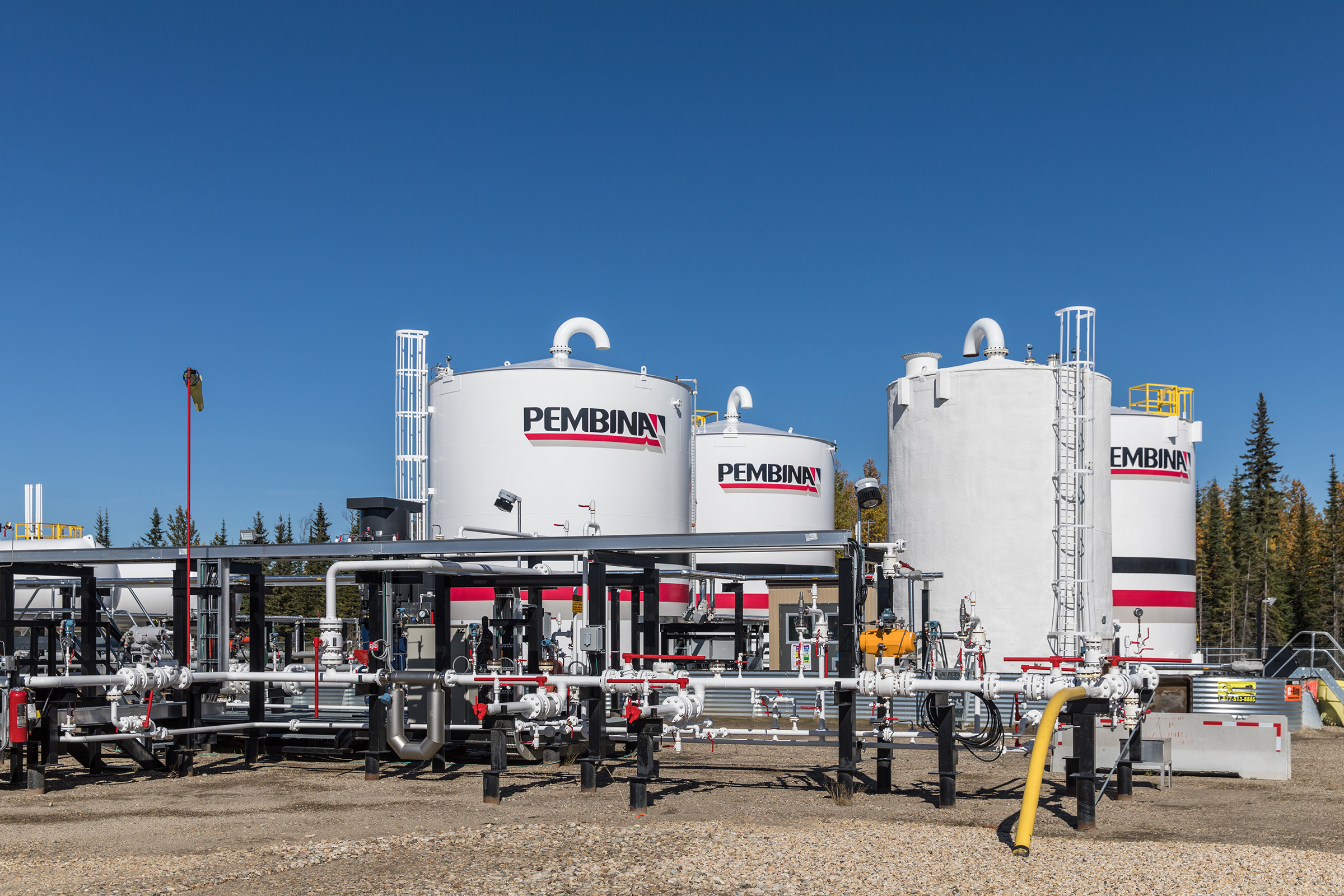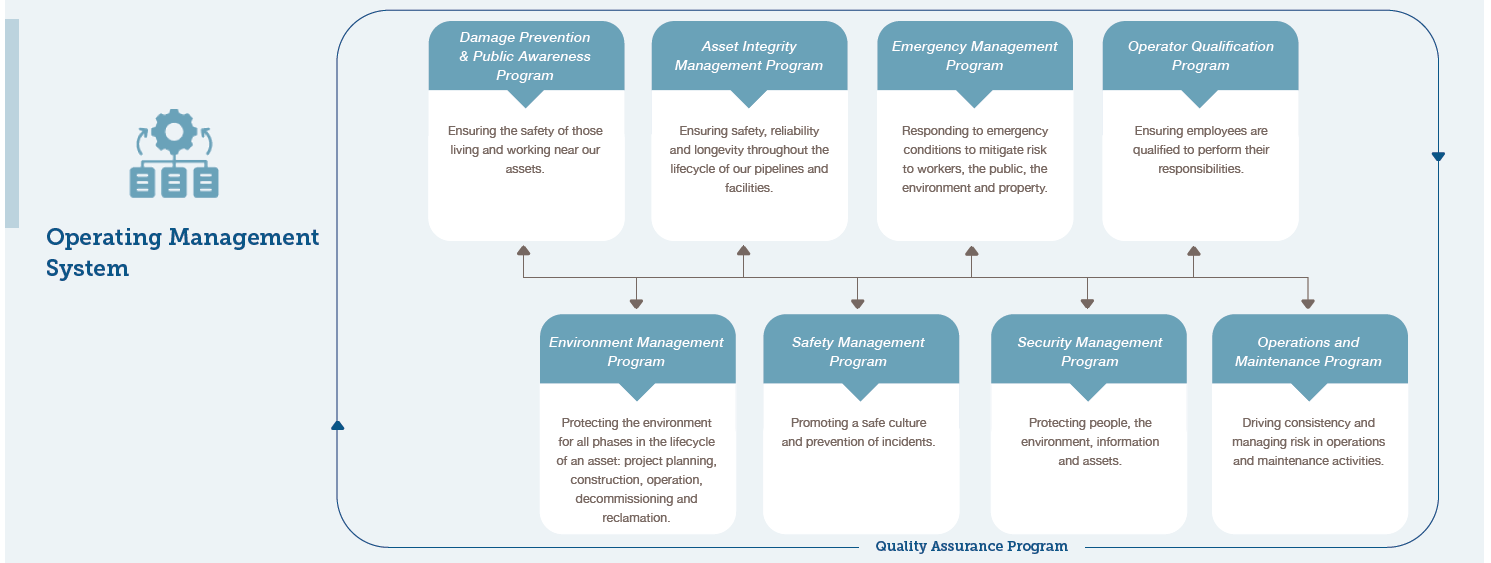When we operate our assets safely, reliably and with consideration for the environment, we contribute to the sustainable success of our employees, communities, customers and investors.
At Pembina, we take a lifecycle approach to managing our assets including planning, construction, operation, decommissioning and reclamation activities. We are committed to continuously improving our operations and seek to align our operating practices to leading standards.
Pembina's view of responsible asset management includes the following topic areas: Integrity Management, Spill Prevention & Mitigation, Waste & Water Management, Biodiversity & Land Use and Cyber Security.
Operating Management System
Pembina is committed to operational excellence and one of the ways in which the Company delivers this is through its Operating Management System ("OMS"). Pembina's OMS governs aspects of Health & Safety and Responsible Asset Management Programs, and provides a consistent framework for the design, development, and implementation of a comprehensive suite of policies, programs, procedures, standards and tools that guide, govern and drive operating activities. The Pembina OMS also supports cyclical planning, implementation, review, and adjustment of operational activities.
As outlined below, Pembina's OMS is comprised of a number of individual programs intended to drive safety, reliability, efficiency, cost-effectiveness and the continuous improvement of the Company's operational performance. Pembina's Quality Assurance Program includes certain processes to systematically and independently verify that these individual programs are established and are working effectively.


